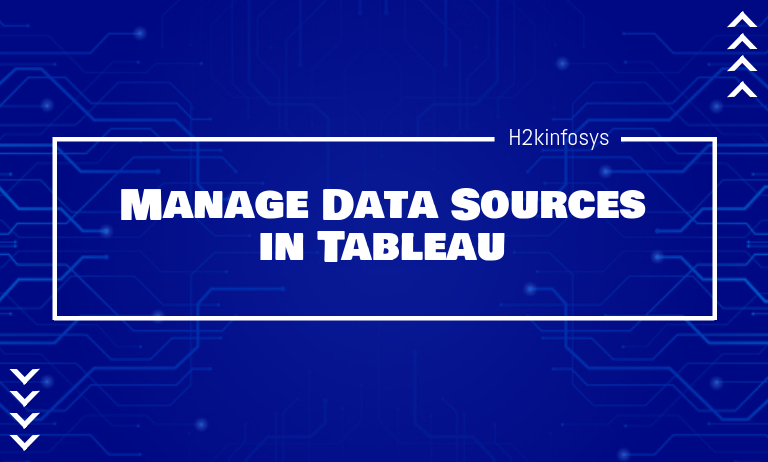You can perform various tasks like edit, replace, and upgrade after setting up data source in Tableau.
How to edit data source?
Step 1: On the Data menu, select a data source, and then select Edit Data Source in Tableau.
Step 2: On the data source page, make the changes to the data source.
Rename the Data Source:
When you want to connect to a data source, you can give it a name for Tableau Desktop.
To rename the data source, select Rename on the Data menu.
Naming is useful when you have a single workbook connected to many data sources. The name you assign to the connection can help you keep track of the specifics of the connection. You can review the connection properties by selecting a data source on the Data menu, and then select Properties.
Duplicate the Data Source:
Sometimes you will want to make changes to a data source like add more tables, set field defaults, hide and show fields, and so on. When you make any of the mentioned changes, it affects all the sheets that are using the data source. You can also duplicate the data source so that you can make the changes without affecting the other existing sheets.
To duplicate a data source, select a data source on the Data menu, and then select Duplicate.
When you duplicate a data source, the duplicate source name has “(copy)” appended to the end.
How to replace data sources?
Replacing the data source does not merge or edit the data sources. Instead, replacing a data source redirects fields used in the worksheet to map to the new data source’s corresponding fields. Any fields that user creates in the original data source (for instance, calculated fields, groups, sets, etc.) included in the view are successfully copied to the new data source. Fields not included in the view not existing in the new data source are not automatically copied and will need to be copied manually and pasted to the new data source before replacing the old one.
The two data sources do not need to be identical; however, any differences between the workbooks will affect only the sheets in the workbook and the fields in the view. More specifically, any fields, sets, groups, and calculated fields that do not exist in the new data source are removed from the Data pane.
Step 1: Open a workbook that connects to the original data source.
Step 2: Select Data > New Data Source and then connect to the new data source.
Step 3: On the Data Sources page, drag a table to the canvas to set up the data.
Step 4: Go to the sheet tab and select Data > Replace Data Source.
Step 5: In the Replace Data Source dialog box, select the Current data source and the Replacement data source.
Step 6: When finished, click, OK.
All worksheets, dashboards, and stories using the original data source are updated to use the new data source. You can also click Undo on the toolbar to revert the change and return to the original data source.
You can also replace one data source with another data source only when both data sources are relational, or when both data sources are cube/ multidimensional data sources.
Save a data source:
Step 1: In Tableau Desktop, open the workbook that has the connection to the data you want to save as a file.
Step 2: At the top of the Data pane, right-click on the name of the data source, and then select the option Add to Saved Data Sources.
Step 3: Enter a file name, select the file type (.tds or .tdsx), and then click Save.
How to upgrade a data source?
You can also upgrade the data sources in your workbook. By upgrading your data sources, you can take advantage of 1) Better data interpretation and 2) Compatibility on the Mac.
For creating a new workbook that uses the legacy connection, navigate your Excel or text file data, click on the drop-down arrow on Open, and then select Open with Legacy Connection.
How to close data sources?
You can also close a data source at any time. While doing so, you do not require to modify the data source. Instead, disconnects Tableau from the data so that you can no longer query it. Also, the data source is cleared from the Data pane, and all open worksheets associated with the data source will be cleared. If you accidentally close a data source, you can use the Undo button to reopen it. You can close a data source by doing one of the following:
Method 1: Right-click (control-click on a Mac) the data source at the top of the Data pane and select Close.
Method 2: Select a data source on the Data menu and then select Close.































One Response